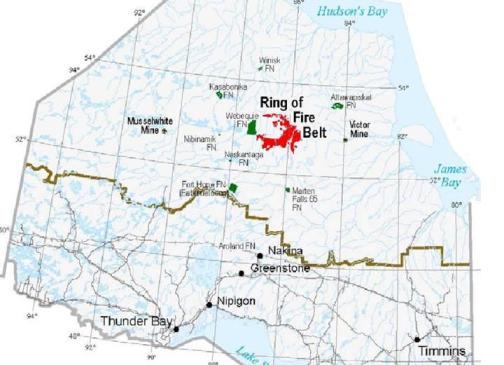Established in 1980, Northern Ontario Business provides Canadians and international investors with relevant, current and insightful editorial content and business news information about Ontario’s vibrant and resource-rich North. Ian Ross is the editor of Northern Ontario Business ianross@nob.on.ca and this article is from the March, 2011 issue.
For an extensive list of articles on this mineral discovery, please go to: Ontario’s Ring of Fire Mineral Discovery
Christine Kaszycki has to maintain a delicate balancing act. Appointed as the province’s Ring of Fire Coordinator last fall, she’s has the wide-ranging task of keeping Aboriginal people, Northerners and the mining companies all on the same page to advance the biggest mineral find in Ontario since the turn of the last century.
Kaszycki, a former assistant deputy minister of the Ministry of Northern Development, Mines and Forestry (MNDMF), already has well-established relationships with mining companies and many Aboriginal leaders in the Far North.
Though living in Sudbury, she regularly commutes to Thunder Bay, where she is staffing up a secretariat’s office there, and travels to the Northern communities for constant consultation with Aboriginal leaders.
Kaszycki views the job as evolving over time. For now, she’s concentrating on building capacity to prepare people in the Far North, many living in Third World-like poverty conditions, to take advantage of all the positive spinoffs from the looming mining projects in the James Bay Lowlands.

























